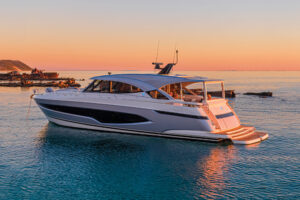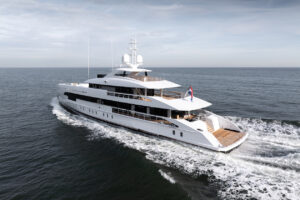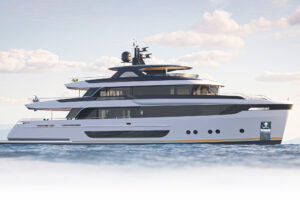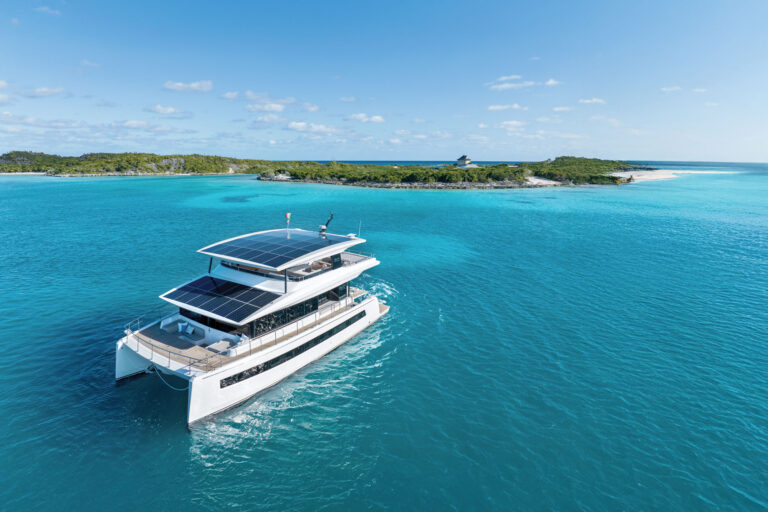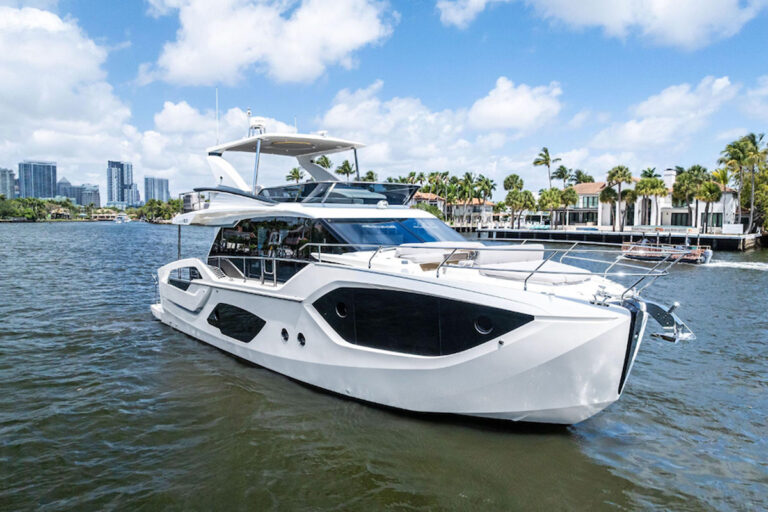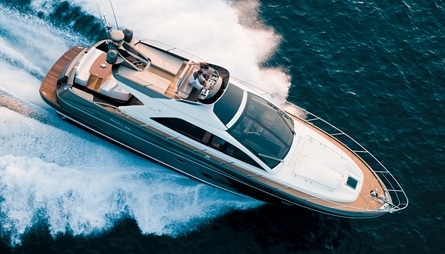
sportriva56445.jpg
There is always a sense of anticipation when it comes to doing a sea trial on a new Riva. Along with the beautifully crafted wooden Rivas that established the Riva reputation, the modern Rivas continue to surprise and enthrall. As far as style goes they are top of the tree; but it’s always matched to innovative design. The Sport Riva concept hews to this tradition by combining the best features of sports and flybridge cruisers, delivered with a high level of passion.
There’s no better place to test a Riva than in its spiritual home of Monaco. In the early morning the boat cleaners were out in force, getting the serried ranks of Rivas ready for their owners. As we headed out to sea on the Sport Riva they stopped to bestow admiring glances. There is no mistaking this yacht as anything but a Riva with its metallic Roman bronze finish and eye-catching styling.
The focus of the design is on the huge curved windscreen glass. I hate to think what those double curvature glass panels cost but then cost tends to be a secondary consideration when it comes to Riva design. The windscreen panels extend across and up and over the lower helm and what looks like a secondary windscreen above is purely a contrasting decorative panel. The flybridge has its own prominent reverse angle windscreen that challenges the flowing lines and adds a hint of aggression to the style but you reap the benefits of this screen out at sea when traveling at speed.
Innovation sparkles in the cockpit layout and the way that the flybridge access ladder curves up from the center of the cockpit’s forward settee. Low settees in the rear of the cockpit have a folding teak table between them, and are mounted on a raised deck to give space for the garage incorporated below. This makes for a great sitting out area served by an extended bar and barbecue counter just forward of the flybridge ladder. The layout leaves space for covered mooring fittings and a clear passageway on each side. For sun protection at the settees, an umbrella can be slotted into the table support.
The sunbeds that traditionally occupy the rear of the cockpit have been moved up onto the flybridge to make room for two individual sunbeds with adjustable headrests. The compact flybridge has room for just the triple helm seat at the forward end facing the dash. Riva has done a good job of sorting the dash layout, keeping it simple but with all the essential controls and displays ready to hand. A small fold-away Bimini provides sun shelter for the helm seat.
This is not the most secure flybridge with low side rails around and nothing much to hold on to when making the transit between the stairs and the helm. The narrow arch mast spans the top of the stairway and, while it looks good, the radar antenna is set so low that both the helm seat and anyone sitting in it would block the radar beam. This is not so much a health hazard as a navigation hazard: You could think that the radar is showing a clear picture ahead when in fact it could be blocked.
The saloon is a bit complicated by two sets of stairs going below, one on the starboard side leading into the galley and then one to a single-berth en suite cabin. The galley is fully equipped with a four-ring stove, a dishwasher, fridge/ freezer and a microwave oven-no longer overkill on a sports yacht meant, like this one, for serious cruising.
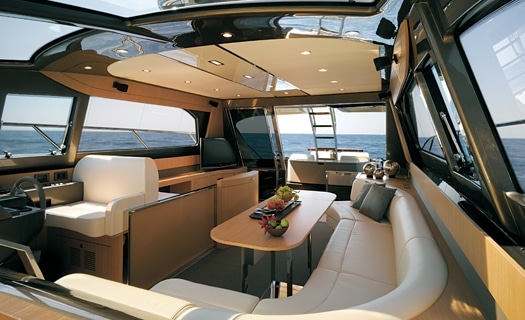
| | |
This galley access tends to crowd the saloon a bit but there is space for a comfortable C-settee and an expanding table. The decor in the saloon is a bit hard edged with elm wood paneling and furniture matched to cream leather settees and fabric panels. The huge windscreen dominates the scene here and although it is tinted you could find heat building up under the overhead glass except for the full air-conditioning that is a standard feature. At the aft end the sliding door is angled so the port rear window can be swung up over the cockpit to link up the saloon and cockpit.
Visibility is excellent from the lower helm and the dash has been kept simple but complete, with good navigation displays and the controls coming comfortably to hand. You need to open up the correct screen on the auxiliary monitoring panel to access the flap indicator (you can specify a range of navigation display screens to meet your needs).
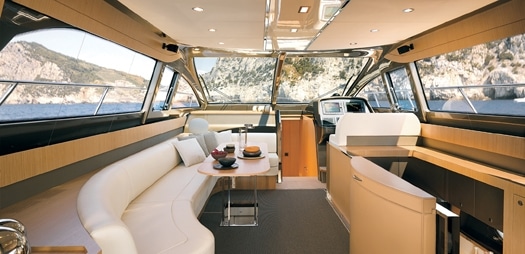
| | |
The stairs down to the cabins are a showcase of real Riva luxury: leather paneling complementing the pronounced elm grain and the textured fabrics. Luxury embraces you and carries you through into the generous bathrooms with their tinted glass tops and the recessed stainless steel bowls.
Heading out to the foredeck is a bit of a balancing act with the side rails set too low for comfortable use. Once forward there is an excellent sunbed with secure side rails and a sun canopy that can be erected over the head end of the sun bed. Mooring and anchoring arrangements are practical.
For power there is a pair of 900-hp MAN diesels that send the drive forward to V-drive gearboxes. There is generous space in the engine compartment, all the essential parts easily accessible; engineering standards are high. I am not sure that the lifebuoy stowage on the underside of the engine hatch is the best place for a quick release in a man-overboard situation. Here you do sense a conflict between practical boating and Riva style.
It would be a mistake, however, to believe that this Sport Riva was all glamour and that performance is not high on its list of priorities. It came as a pleasant surprise to find this yacht performing brilliantly at sea. Conditions off Monaco were challenging in the aftermath of a strong blow, with a confused sea made worse by refractions off the breakwater. The Sport Riva ride was smooth and fully controllable. The fine entry helps a great deal in the way that this yacht performs in waves; I felt we could run all day at 25 knots in these challenging conditions without feeling much discomfort. The performance figures are showing on the low side partly because of the difficult wave conditions and partly because one propeller needed changing after contact with debris; 34 knots should be attainable in good conditions.
I loved the style and performance of this new concept from Riva. It is an eye-catcher in both regards. The boat tested was the prototype and I am sure changes will be made, but once more Riva goes to the top of the charts. You have to admire how they can keep up this highwire act of blending innovation and style. This first Sport Riva is a feast for the eyes and for the emotions.

